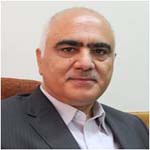The first in vitro study of seed dormancy breakage in Iranian populations of St. John’s Wort (Hypericum perforatum) with different geographical origins
St. John’s wort is one of the most amazing and medicinal plants of interest worldwide, which is nowadays known as a certain cure for depression. However, the presence of dormancy and low seed germination is a barrier to the progress of its breeding programs. Despite the richness of the plant’s genetic resources, there are only a few studies reported on its propagation and maintenance in Iran, most of which do not mention the geographical origin of the used seeds or explants. The current study was carried out aiming to evaluate in vitro plant propagation of eight Iranian endemic populations of St. John’s wort seeds which belonged to different geographical origins, emphasizing seed dormancy phenomena.
Following the collection of eight populations of St. John’s wort (Hypericum perforatum L.) seeds from different geographical regions of Iran, the Murashige and Skoog culture media (common salt mixture as a control, MS improved with gibberellic acid and a modified combination of MS) was used in an effort to investigate the effect of culture medium as well as seed collection locations on the germination percentage of these populations.
The results showed that the interaction between the seed collection locations and the culture medium on seed germination was significant at P<0.01. Besides, the effect of changing culture media on seed germination was significant in all populations at P<0.01, except for Meshkin-Shahr. In other words, the seeds collected from Meshkin-Shahr germinated easily as well as notably under in vitro conditions (97.3% on average), and there was no need either to modify the combination of MS medium or to use gibberellic acid for seed dormancy elimination. The seeds originated from Challus and Peresk had the lowest germination in the control medium (22.3%, on average). Seeds from Challus and Saqqez had better germination in the media enriched with gibberellic acid compared to the control and the modified MS media (88% and 65%, respectively). However, less than half of the Parvar seeds germinated in the MS medium improved with GA3, compared to the control. Cultivation of seeds obtained from Fereydunkenar in common MS medium also led to better germination than using GA3 and modifying the combination of medium with 95% and 99% confidence levels, respectively.
The results of the current study demonstrated that the observed difference in seed germination percentage is remarkable in the Iranian endemic St. John’s wort populations under in vitro conditions. Moreover, the variation among national populations was significant. Besides, the response of the seed populations originating from different locations varied with respect to the changes in the culture medium and in the different cases. This shows the considerable effect of the growth location of the maternal plant on the characteristics of the next generation seeds, especially the way they germinate. Hence, it is very important to pay attention to the seed’s origins in the studies and it is investigable.
-
Leaf micromorphology of some Viola spp. from Iran (resent)
Mahideh Habibi Kaleibar, Sarah Khorasaninejad *, Mostafa Ebadi Nahari, , Mohsen Farhadpour, Christian Gruber
Journal of Applied Biology, -
Intraspecific variation of major alkaloids in Afghanistan opium poppy (Papaver somniferum L.)
Sayed Zia Rasekh, *, Alireza Ghassempour
Journal of Plant Physiology and Breeding, Winter-Spring 2024


